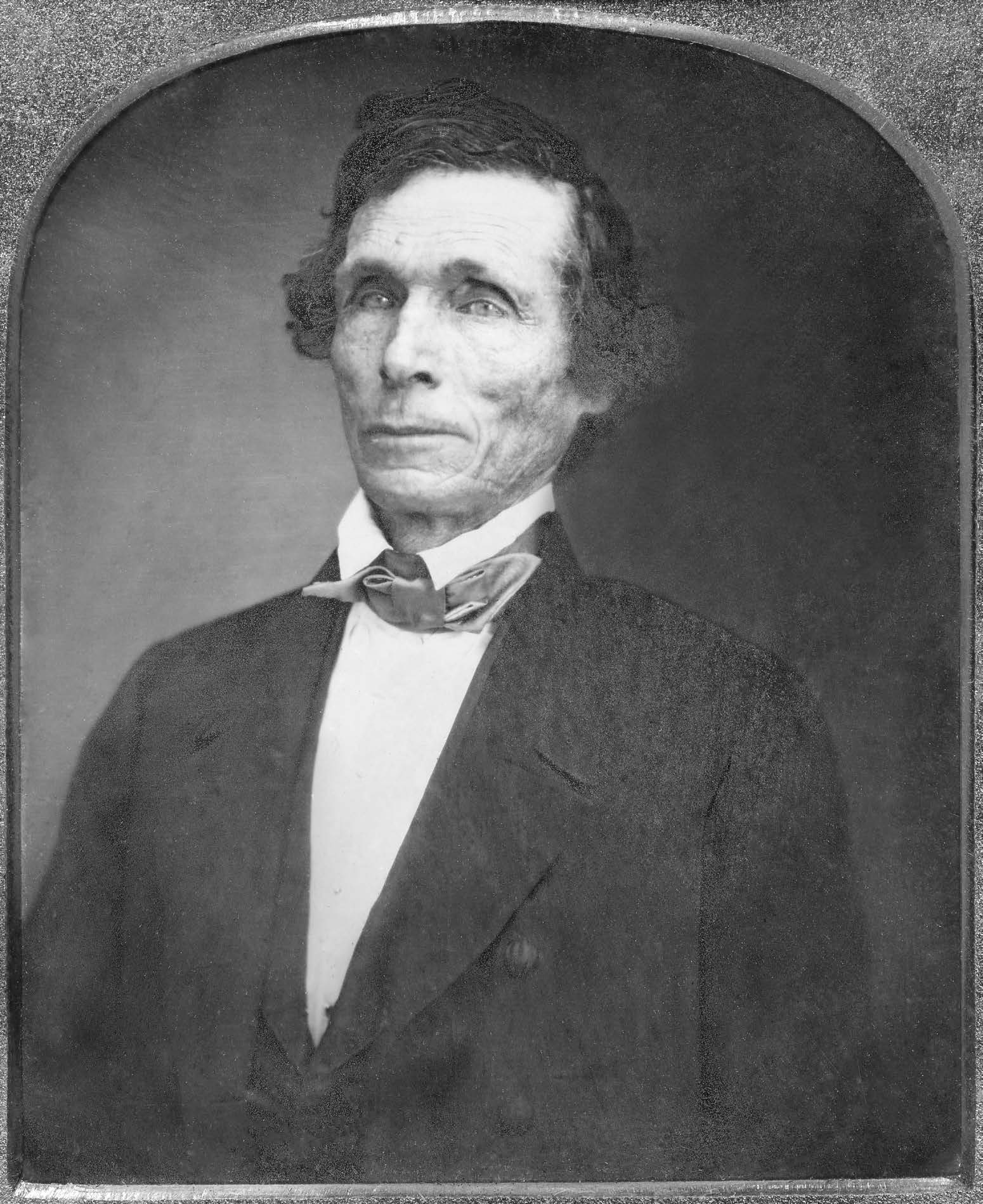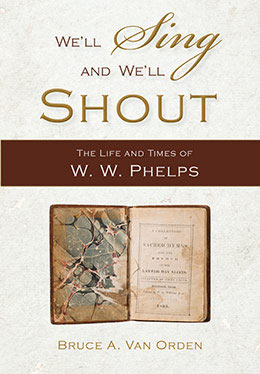Epilogue
Bruce A. Van Orden, "Epilogue" in We'll Sing and We'll Shout: The Life and Times of W. W. Phelps (Religious Studies Center, Brigham Young University; Salt Lake City: Deseret Book, 2018), 507–510.
 Portrait of W. W. Phelps, ca. 1855.
Portrait of W. W. Phelps, ca. 1855.
W. W. Phelps played a large role in the early church as its first printer and publicist. As a close associate of Joseph Smith, he understood new restorationist and millenarian doctrines as well as or better than any other leading lights in Mormonism. His essays and editorials in The Evening and the Morning Star, the Latter Day Saints’ Messenger and Advocate, the Times and Seasons, The Wasp, the Nauvoo Neighbor, the Deseret News, and the Deseret Almanac guided and motivated early Latter-day Saints. Many of his contributions were actually written in the name of Joseph Smith. From 1831 to 1846, from New York to Missouri, from Missouri to Ohio, again in Missouri, and then in Nauvoo, Phelps exerted a profound influence on Mormonism that has often been overlooked and certainly should not be denied.
Even in subsequent years while Phelps was crossing the plains and serving in Utah, his contributions were noteworthy. However, during the Civil War period, Phelps’s name, not to mention his stature as a proponent of the glorious Restoration, was no longer well known among the Saints, especially given the tens of thousands of converts who immigrated to Zion from Europe in the 1860s. From 1865 through 1872, Phelps’s star clearly dimmed, one factor being that his mind became clouded as he descended into dementia. At his death in 1872, most energetic, younger-generation Mormons knew Phelps merely as a footnote in Missouri, Ohio, and Illinois history. Only a small handful even remembered him personally, and they died out in due time.
Unlike today with our access to documents on the internet, those nineteenth-century Saints did not have access to the early church newspapers in which Phelps had played such a considerable role. The 1870s Saints actually had a weaker grasp of early Mormon history than their predecessors did because the serialized “History of Joseph Smith” (partly written by Phelps and published by him in the media) had concluded its run in 1858 in the Deseret News. Some historical material gradually appeared in new emerging Mormon media, but W. W. Phelps for the most part received scant attention in it. As the decades came and went, the name William Wines Phelps came to be known by a high majority of Mormons as a hymn writer and hardly for anything else. For many people, his hymns are his only legacy. Even with that, Latter-day Saints have had little understanding of the contextual circumstances that brought about Phelps’s hymns. This book was written to place Phelps back into his appropriate standing in the early church.
This book has examined Phelps’s multiple writings in the context of his fascinating and often controversial life. Many of his essays continue even today to have enormous influence on Mormon dogma because they are believed to be theological writings by Joseph Smith and are found in compilations of the Prophet’s teachings. My conclusion, based on circumstantial and stylistics evidence,[1] is that a dozen of Smith’s editorials in the 1842 Times and Seasons were actually ghostwritten by W. W. Phelps. Other examples of Phelps’s prose and poetry over the years influenced decisions made by the First Presidency; the Twelve Apostles; other prominent figures such as Parley P. Pratt, Brigham Young, Eliza R. Snow, and Willard Richards; and numerous other Latter-day Saints. For nearly two centuries, his epic hymns have enriched worship services in Mormon conferences and weekly meetings.
Just as the press influenced early developments in the American Republic, the products of the original printing offices in Mormonism—in Independence, Kirtland, Nauvoo, and Salt Lake City—helped formulate what Mormons believed. W. W. Phelps was the most dynamic figure in these printing offices, at least through 1854.
Throughout the presidential leadership of Joseph Smith, Phelps was among the Prophet’s closest advisers and friends. Again and again, through their documented interactions with each other, we gain insights into Joseph Smith’s personality, inner beliefs, and emotions. In this way Phelps’s biography not only traces the remarkable life of its subject but also sheds new light on Mormonism’s founder.
W. W. Phelps’s marital and family life are also worthy of attention to readers of the twenty-first century. They demonstrate that in the culture of the nineteenth century the role and ideas of men were considered significantly more important than those of women. To be sure, the relative equality of gender roles in today’s church reflects an understanding far different from that of Phelps’s milieu. The same can be said for other aspects of Phelps family dynamics in relation to modern church teachings concerning the family.
In 1835 patriarch Joseph Smith Sr. referred to W. W. Phelps as a “speckled bird.”[2] Once, in the Times and Seasons, Phelps wrote a piece and identified himself as “Joseph’s Speckled Bird.”[3] This appellation acknowledges that Phelps was a strange person who was often a target of ridicule and jealousy. This “speckled bird” of Mormonism strove through all the highs and lows of his life to do God’s will, achieve righteousness, and be ready for the Lord Jesus Christ’s return to the earth for the millennial reign. Phelps’s life and achievements were similar to those of many Mormon forebears in that he strove to do his best in following God’s will, all in spite of any peculiarities he had. We can understand all first-generation Latter-day Saints better by coming to know William W. Phelps. We can also comprehend better the purposes of our own lives, in terms of both our accomplishments and our fears.
Notes
[1] In chapter 24 I summarize the chief characteristics of Phelps’s verbose writing style, drawn from my exhaustive study of all of his known writings to date.
[2] Patriarchal Blessings Book, vol. 2, 221, CHL.
[3] Joseph’s Speckled Bird [W. W. Phelps], “Paracletes,” T&S 6 (May 1, 1845): 891.
